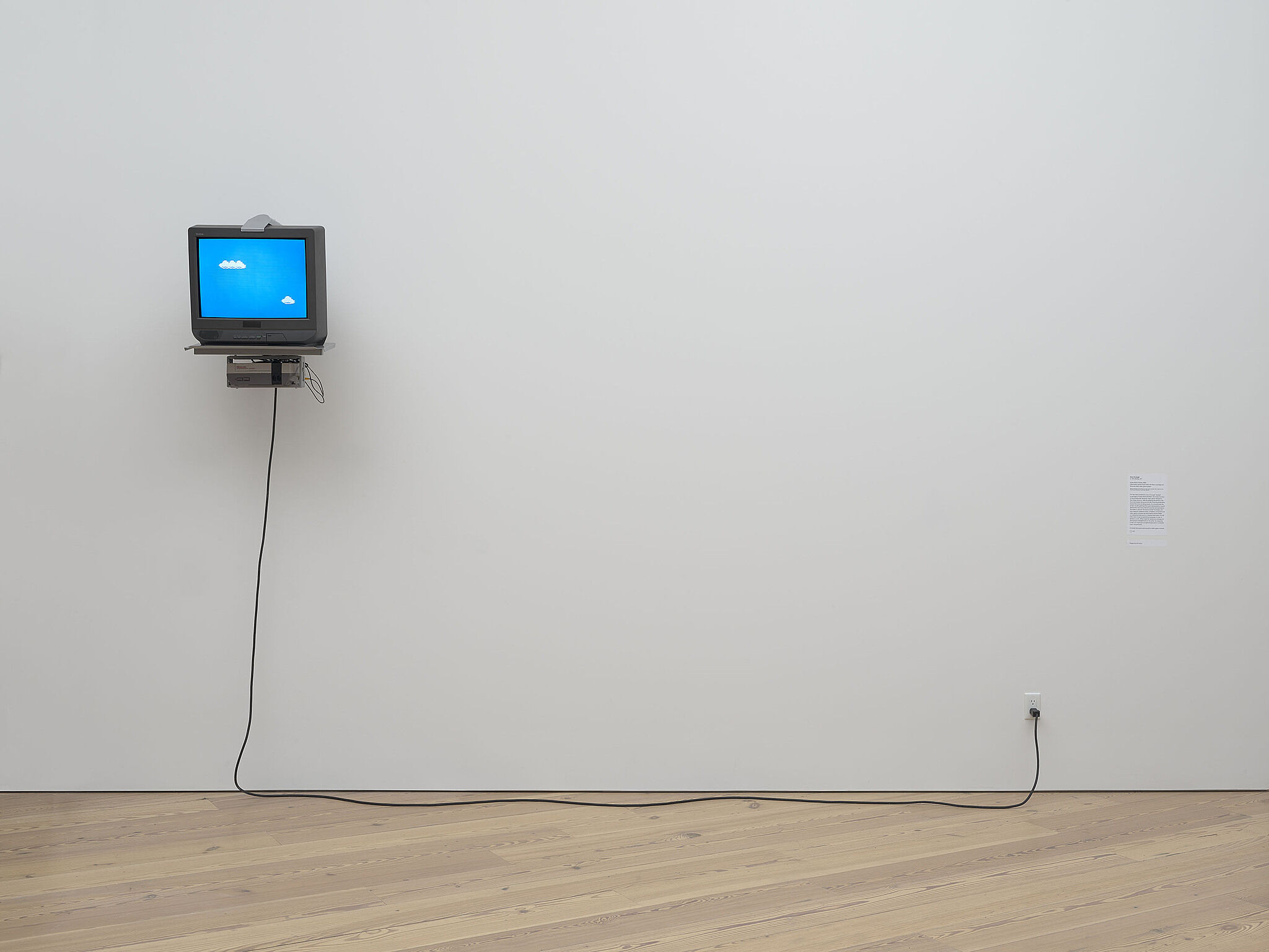Programmed: Rules, Codes, and Choreographies in Art, 1965–2018 | Art & Artists
Sept 28, 2018–Apr 14, 2019
Programmed: Rules, Codes, and Choreographies in Art, 1965–2018 | Art & Artists
Signal, Sequence, Resolution:
Liberating the Signal
5
The artists in this grouping use electronic or digital signals as their material but subvert the signals’ intended function, thereby “liberating” them from their original purpose. In doing so, they draw attention to the potential for signals to be carriers of instructions and visual information. Nam June Paik’s Magnet TV creates visual effects by distorting a television’s electronic signal, while digitally manipulated signals are an element of Cory Arcangel’s Super Mario Clouds for which the artist reprogrammed a Nintendo cartridge to erase the sound and all visual elements except for the clouds from the iconic video game. Signal and image resolution are explored by Jim Campbell, who programs LEDs to create cinematic and spatial images in both a room-sized installation and screen-based works.
Cory Arcangel, Super Mario Clouds, 2002
For this work, Cory Arcangel “hacked” a cartridge of Super Mario Brothers, the original version of the blockbuster Nintendo video game released in the United States in 1985. By altering the game’s code, the artist erased the sound and all of the visual elements except the iconic scrolling clouds. On a formal level, the project recalls paintings that push representation toward abstraction: how many elements can be removed before the ability to discern the source is lost? Arcangel, who was trained in classical music, considers computers and video-game consoles his instruments, and he insists on mastering them prior to creative exploration; he will often learn a new programming language in order to develop a work. What might be viewed as nostalgia for the popular entertainments of an earlier era depends, in fact, on a rigorous conceptual approach to computer hard- and software.
Artists
- Josef Albers
- Cory Arcangel
- Tauba Auerbach
- Jonah Brucker-Cohen
- Jim Campbell
- Ian Cheng
- Lucinda Childs
- Charles Csuri
- Agnes Denes
- Alex Dodge
- Charles Gaines
- Philip Glass
- Frederick Hammersley
- Channa Horwitz
- Donald Judd
- Joseph Kosuth
- Shigeko Kubota
- Marc Lafia
- Barbara Lattanzi
- Lynn Hershman Leeson
- Sol LeWitt
- Fang-yu Lin
- Manfred Mohr
- Katherine Moriwaki
- Mendi + Keith Obadike
- Nam June Paik
- William Bradford Paley
- Paul Pfeiffer
- Casey Reas
- Earl Reiback
- Rafaël Rozendaal
- Lillian Schwartz
- James L. Seawright
- John F. Simon Jr.
- Steina
- Mika Tajima
- Tamiko Thiel
- Cheyney Thompson
- Joan Truckenbrod
- Siebren Versteeg
- Lawrence Weiner

